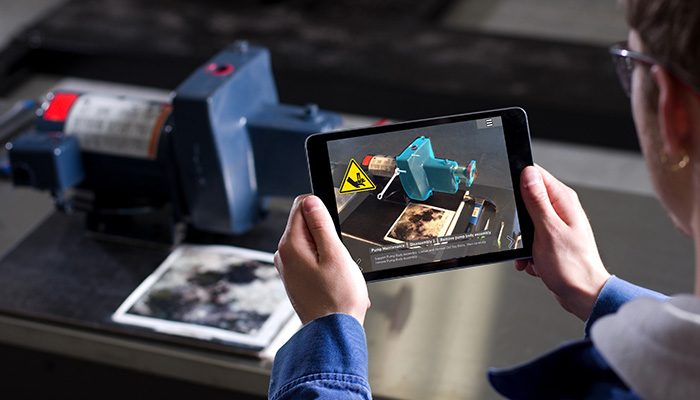The Big Discussion: Augmented Reality
May 17, 2017 • Features • Augmented Reality • Future of FIeld Service • Niklas Rengfors • XM reality • Big Debate • David Nedohin • Evyatar Meiron • FieldBit • ScopeAR
In a new series of features we will take one topic, bring together three leading experts on that topic and put four key questions to them across four weeks, to help us better understand its potential impact on the field service sector...
Our first topic is Augmented Reality and our experts are Evyatar Meiron, CEO, Fieldbit, Niklas Rengfors, Head of Sales & Marketing, XM Reality and David Nedohin, President, ScopeAR...
Question One: Just how big an impact can and will Augmented Reality have on field service delivery?
 David Nedohin, President, ScopeAR
David Nedohin, President, ScopeARMany analyst firms forecast that the AR market will continue its rapid growth, reaching upwards of $140 billion in just a few years. The impact augmented reality can have on field service specifically is unprecedented as it pertains to training, equipment maintenance or repair and knowledge transfer.
For the first time, augmented reality is allowing field workers to take advantage of the power of computers and interact with them in the real world -- moving from a two dimensional screen to seeing information locked on top of the image of the equipment in the real-world and in real-time. I believe AR will be the user interface of the future, making all of a company’s information, intelligence and analytics actionable, by overlaying content directly on top of the real world - when and where a worker needs it most.
The reason that field service industries will lead in benefitting from AR is due to a combination of an ageing workforce that is retiring at staggering rates, and a younger workforce that changes positions quicker than ever.
Expert knowledge is difficult to retain and even more difficult to get into the hands of those in the field without significant delays and expense. AR allows organisations to retain their experts without sending them into the field, while being able to rapidly leverage and measure the expertise they have by putting it right in the hands of the worker who needs it. Augmented reality is enabling “on-demand knowledge transfer.”
 Evyatar Meiron, CEO, Fieldbit
Evyatar Meiron, CEO, FieldbitAugmented reality is changing the way people live, work and interact with one another. The introduction of augmented reality for field service represents nothing less than a seismic shift. The magnitude of its potential impact is comparable to the impact that personal computers had on office workers.
FSM solutions address the communication and workflow needs of service managers, allowing them to tell technicians where to go, what problem needs to be fixed, and which spare part to use. Augmented reality platforms complement FSM by telling the technician how to fix the problem.
This was the missing link.
With this capability, enterprises will be able to drastically boost the productivity and efficiency of their field service operations.
Using augmented reality, technicians can receive precise visual instructions from remote experts to execute complex machinery fixes. Not only does this increase first time fix rates, it also relieves mental stress since technicians can enjoy “over-the-shoulder” coaching throughout the process.
 Niklas Rengfors, Head of Sales & Marketing, XM Reality
Niklas Rengfors, Head of Sales & Marketing, XM RealityWe believe it has a big impact already today, business cases show unreal savings by making the field service delivery more efficient, due to less travelling, increased uptime etc.
We also see big drivers at customers in being able to deliver more profitable service offerings and in the end gain more satisfied customers.
Next weeks question: What advantages does Augmented Reality offer over video calls such as FaceTime and Skype etc?





















 Field Service News is published by 1927 Media Ltd, an independent publisher whose sole focus is on the field service sector. As such our entire resources are focused on helping drive the field service sector forwards and aiming to best serve our industry through honest, incisive and innovative media coverage of the global field service sector.
Field Service News is published by 1927 Media Ltd, an independent publisher whose sole focus is on the field service sector. As such our entire resources are focused on helping drive the field service sector forwards and aiming to best serve our industry through honest, incisive and innovative media coverage of the global field service sector.
Leave a Reply